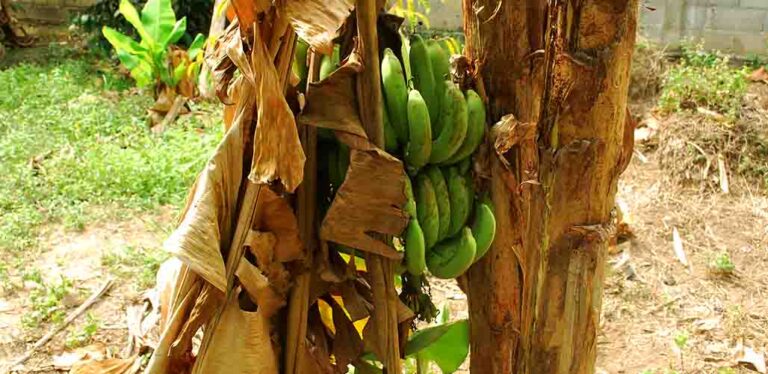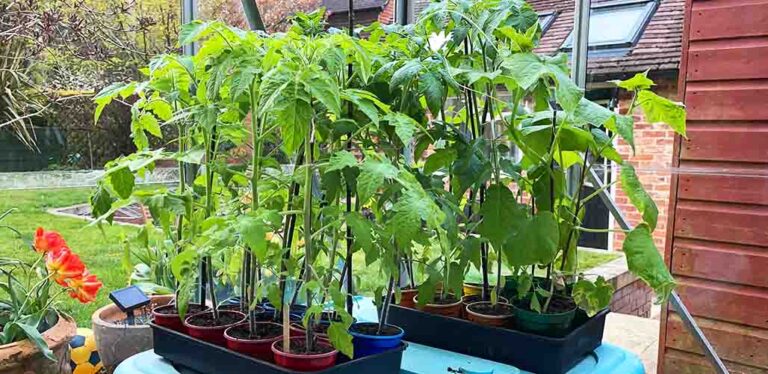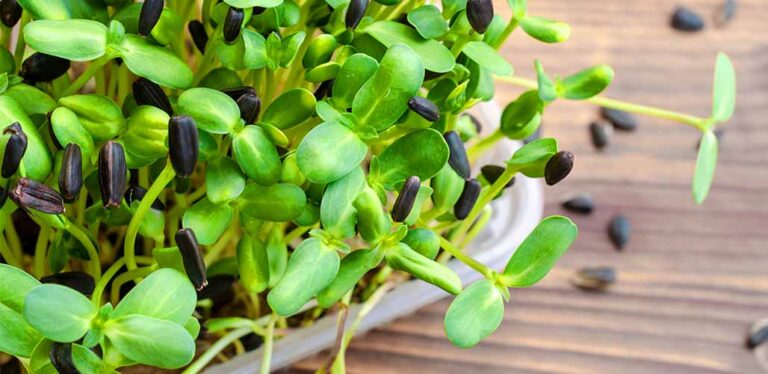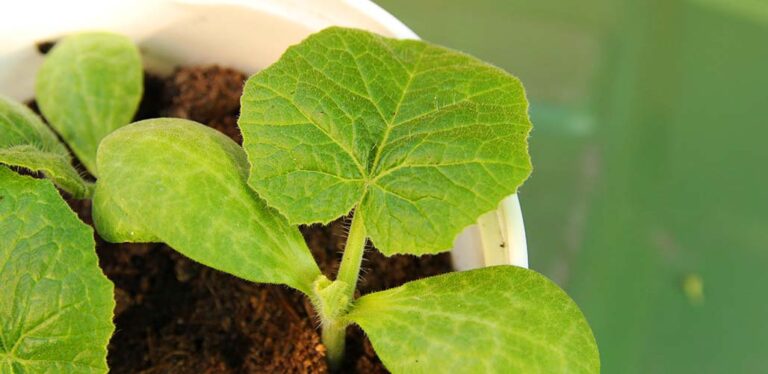Growing Plants From Plugs
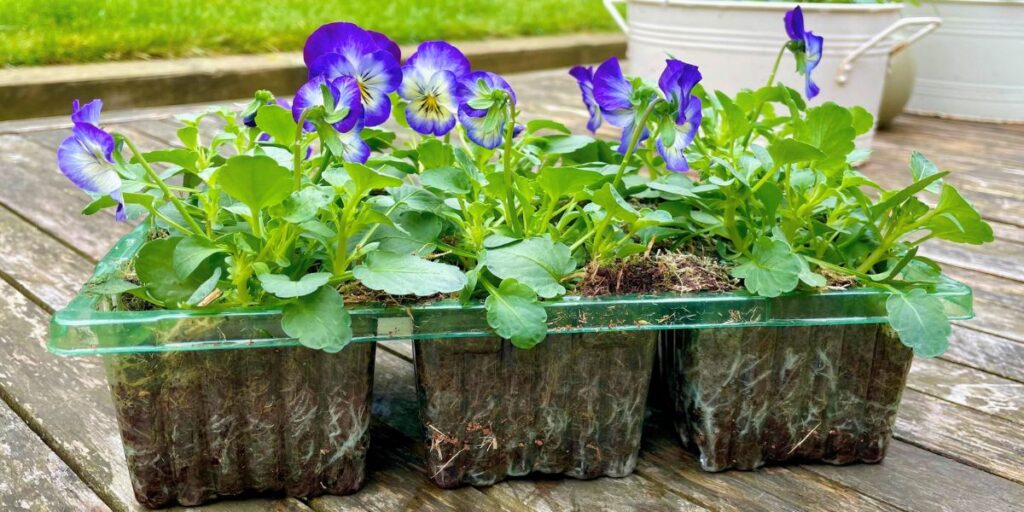
Plug plants are seedlings or rooted cuttings, sold in trays or ‘flats’ containing multiple young plants in their own individual cells. Growing plants from plugs is quicker and more straightforward than growing them from seed or your own cuttings, and they cost less than more developed plants sold in individual plant pots. But, they’re not always the best choice for every gardener. Here’s everything your need to know about getting started with plug plants.
- What are plug plants?
- Which kinds of plants can you buy as plugs?
- Why choose plugs plants?
- The drawbacks of plug plants
- Where to find them
- Tips for planting your plugs
What are plug plants?
Plug plants are young seedlings or rooted cuttings, sold in cell trays or ‘flats’. A tray can have anywhere between 4 and 72 cells, each containing a single very young plant. Cells vary by size, but they’re always small enough that you can comfortably hold their contents in one hand. In the UK, some online retailers even sell ‘posti-plugs’ – tiny plug plants with just a couple of true leaves, in trays slim enough to go through a mailbox! Depending on their size, plug plants might need potting on again before planting out, or they might be ready to go straight into your containers, beds, and borders.
About a generation ago, most annual and perennial plants started out in cell trays, but it was uncommon for them to be sold to gardeners at that stage. Usually nurseries or garden centers would care for them until they were ready to go into individual 3” or 4” pots, and then sell them. Here you can see the difference in size between a viola from a tray of plugs, and a viola sold in it’s own individual pot:
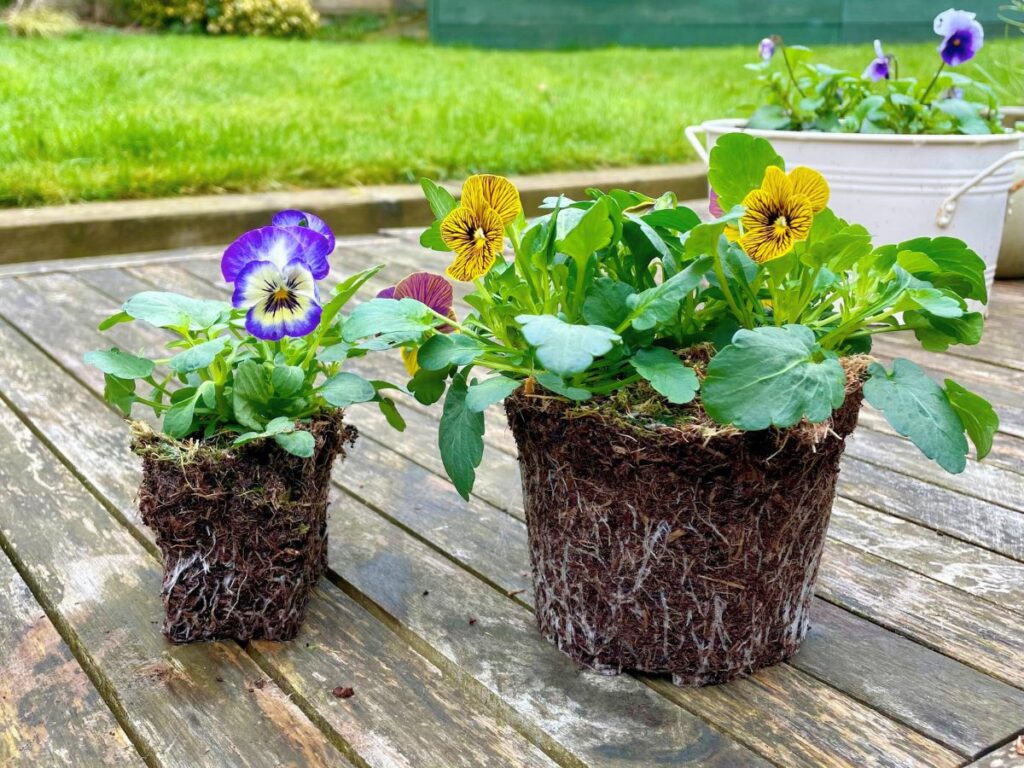
It’s probably only within the last 10 or 20 years that selling plug plants directly to customers has exploded in popularity. It seems the change has been driven partly by an increase in demand for mail order plants. Trays of plugs are much cheaper to ship than individually potted plants. Plug plants have also proved popular with home improvement and big box stores working on “stack ‘em high, sell ‘em cheap” principles. They are cheap for them to buy and sell, and stores can stock larger quantities than if they only sold individually potted plants.
Which kinds of plants can you buy as plugs?
Over the years, I’ve bought a huge variety of plants as plugs, including heucheras, echinacea, yarrow, violas, pansies, petunias, tomatoes and cabbages. Plants commonly available in trays of small plugs include:
- Annual bedding plants
- Perennials that die back to ground level in winter and regrow in spring
- Herbs
- Vegetables
- Grasses
- Succulents
Plants which aren’t suited to selling as plugs include trees and shrubs, and species with a deep tap root, such as carrots, dill, fennel, euphorbias and columbine.
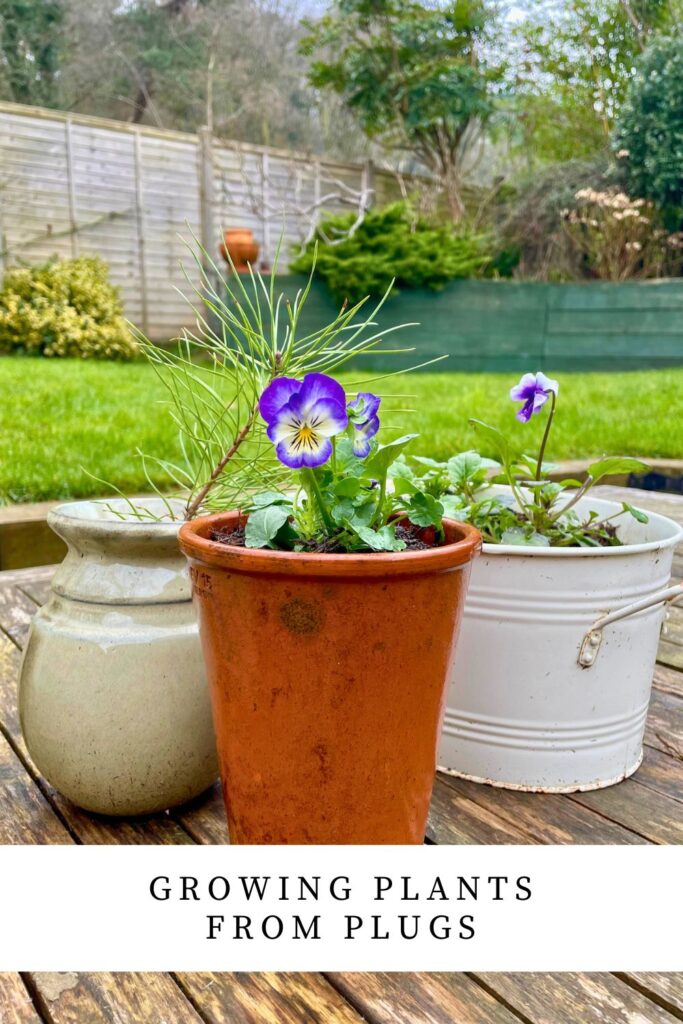
Single species plug trays, vs ‘potted garden’ kits
Until very recently, all the plug plants in a tray would be the same species and variety. Like the tray of violas in the photos accompanying this article. But an exciting development in the last few years has been curated trays of different species, all chosen to look good together and grow well in the same conditions – sometimes described as ‘a garden in a tray’. If you struggle with choosing planting combinations, they’re perfect for taking the stress out of filling a hanging basket or planter. For gardeners who like control over their planting choices, but don’t want lots of the same plant, some nurseries even offer the option to pick and choose your own mixed tray now.
Why choose plug plants?
Plug plants have lots of advantages:
1. They save time.
Buying plug plants cuts out the trials and tribulations of growing plants from seed or cuttings. You don’t need seed compost, or a heated propagator. Your window sills won’t be taken over by seed trays for weeks on end, and you can laugh in the face of problems like damping off. Most plug plants don’t even need hardening off – but if you buy tender annuals before your last frost date, they will need some protection until the risk of frost has passed.
2. They’re cheaper than individually potted plants.
Buying plants as plugs saves nurseries the time and resources they would have to invest to grow them into larger plants for individual sale. So they’re cheaper. If you have lots of beds or containers to fill with bedding plants in summer, or a large border to fill with ornamental grasses, or a whole lawn to turn into a wildflower meadow, plug plants are an economical way to go about it.
3. They make an early impact.
Plug plants are often grown under tightly controlled conditions, with heaters, grow lamps and humidity monitors. So they start producing flowers very early on. Compare that to my garden, which sits in a small valley between two hills. Our spring flowers are always at least three weeks behind those of my friends living at the top of those hills! So one of my favorite reasons to buy plug plants is to bring some spring color into my garden as early as possible, when I’m desperate for the lifeless gray days of winter to end.
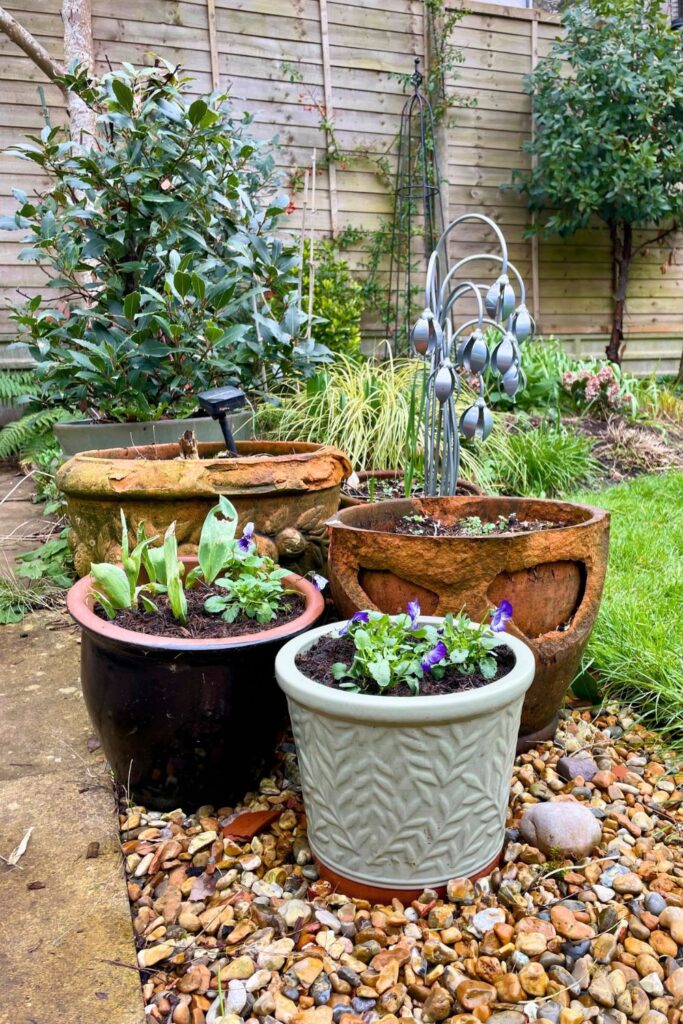
4. They’re the perfect insurance policy.
Lots of vegetables are available as plugs, and they’re a great back up plan if you forget to sow your broccoli on time, or your tomato seedlings get wiped out by an unexpected frost after planting them out.
The drawbacks of plug plants
Plug plants can be great, and I love them. But not everyone feels the same way, and I don’t always reach for them when growing from seed or buying larger, more established plants are available alternatives. Here’s why.
1. There’s less choice than growing from seed.
Most retailers only offer their best sellers as plug plants. So if you want something rare or unusual, you’ll need to grow from seed or buy individual plants from a specialist nursery instead. For some projects, such as restoring native species to a large meadow, plugs are also more expensive than using seed.
2. They are small.
By definition, plug plants are small and have a lot of growing to do. Annual bedding plant plugs do take off quickly as soon as you plant them though. Compare these plugs with two I planted 10 days earlier:
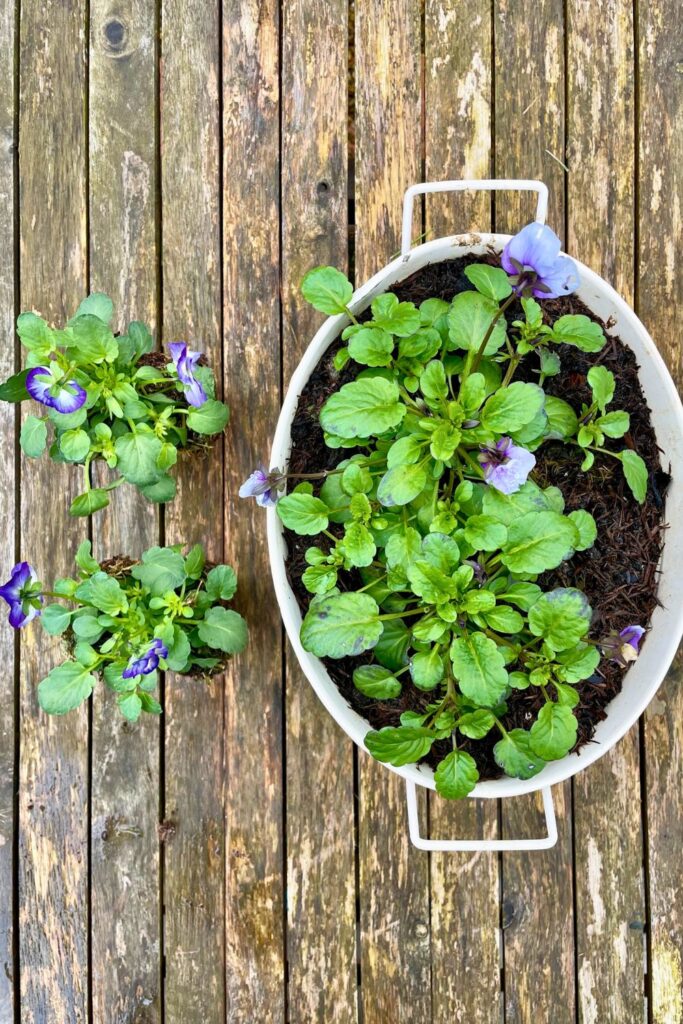
But perennials destined to get quite large might take several years to reach full size. Lavender plugs are a good example of this. They’re widely available in massive trays, for planting gorgeous Mediterranean-inspired hedges. But the trade off for getting 24 plants for as little as $20 is that you’ll have to wait 3 or 4 years for your hedge to really look like a hedge!
2. Cell trays are usually plastic.
Most plug plants come in polystyrene or pressure-formed plastic trays. And we’re all familiar with the ecological footprint of plastics. If you have plug plants shipped to you, the carbon footprint is bigger than having a few seed packets mailed out too. So, some gardeners aren’t happy with the environmental impact of buying plugs. However, more and more garden centers offer recycling drop-off points for plastic cell trays, and I reuse mine for planting seeds.
3. Shipping risks.
I’m constantly amazed by the clever packaging solutions mail order nurseries use to ensure that their plug plants reach me in perfect condition. And they are usually very willing and prompt to replace or refund any plants that don’t make it. But, casualties do happen, and they are frustrating.
Where to find plug plants
These days, plug plants can be bought from all kinds of places, including:
- Grocery stores
- Home improvement stores
- Big box stores
- Garden centers
- Nurseries
- Online from mail-order nurseries
Lucy has even bought succulent plug plants on Amazon!
Plug plants from chain stores are cheap and cheerful but usually more generic than plugs from nurseries. And as soon as they arrive at the store, they’re no longer being cared for by people who know and love plants. At our nearest grocery store, trays of summer annuals often go unwatered and wilt away within a day or two.
On the other hand, independent local plant nurseries and specialist online retailers are going to cost more, but they’re more likely to have interesting and unusual plant varieties that you’re unlikely to find elsewhere. And in general, their plants are more likely to be healthy. Some great examples of specialist online nurseries selling high quality plug plants are:
- Richters for herbs.
- Prairie Moon for native, wild-type, prairie plants.
- Northcreek for perennials and grasses.
- Annie’s Annuals for, well, annuals.
- Select Seeds, for old fashioned and heirloom fragrant flowers.
Whether you’re buying from a store or garden center, buy the biggest, healthiest plugs you can find. I love the challenge of rescuing a neglected and discounted perennial or shrub in a large container as much as the next person, but this isn’t the time for that.
Tips for planting your plugs
Plug plants should come with directions as to whether they’re ready for planting straight into their final location, or if they need growing on in a larger pot in a sheltered location first. Lots of online nurseries will let you order plugs from fall onwards, but dispatch them in spring, when it’s safe to plant them straight out.
- Start by standing the cell tray in water for 30-60 minutes, so the plant is well hydrated and the soil around the root ball can be lifted out in one piece, without crumbling.
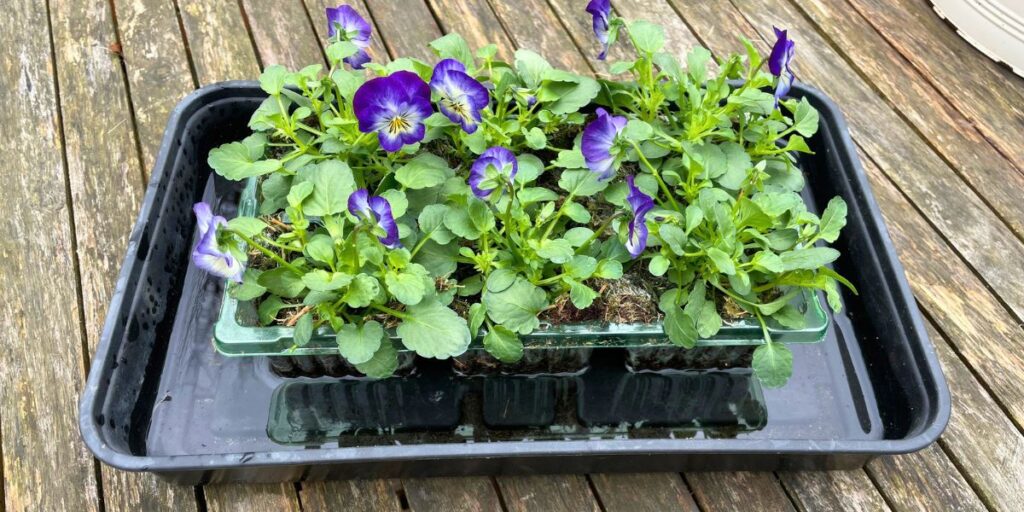
- Ease each plug out by tipping the cell tray onto one edge, holding the plant close to its base with one hand, and gently squeezing the outside of the cell with the other to release the root ball.
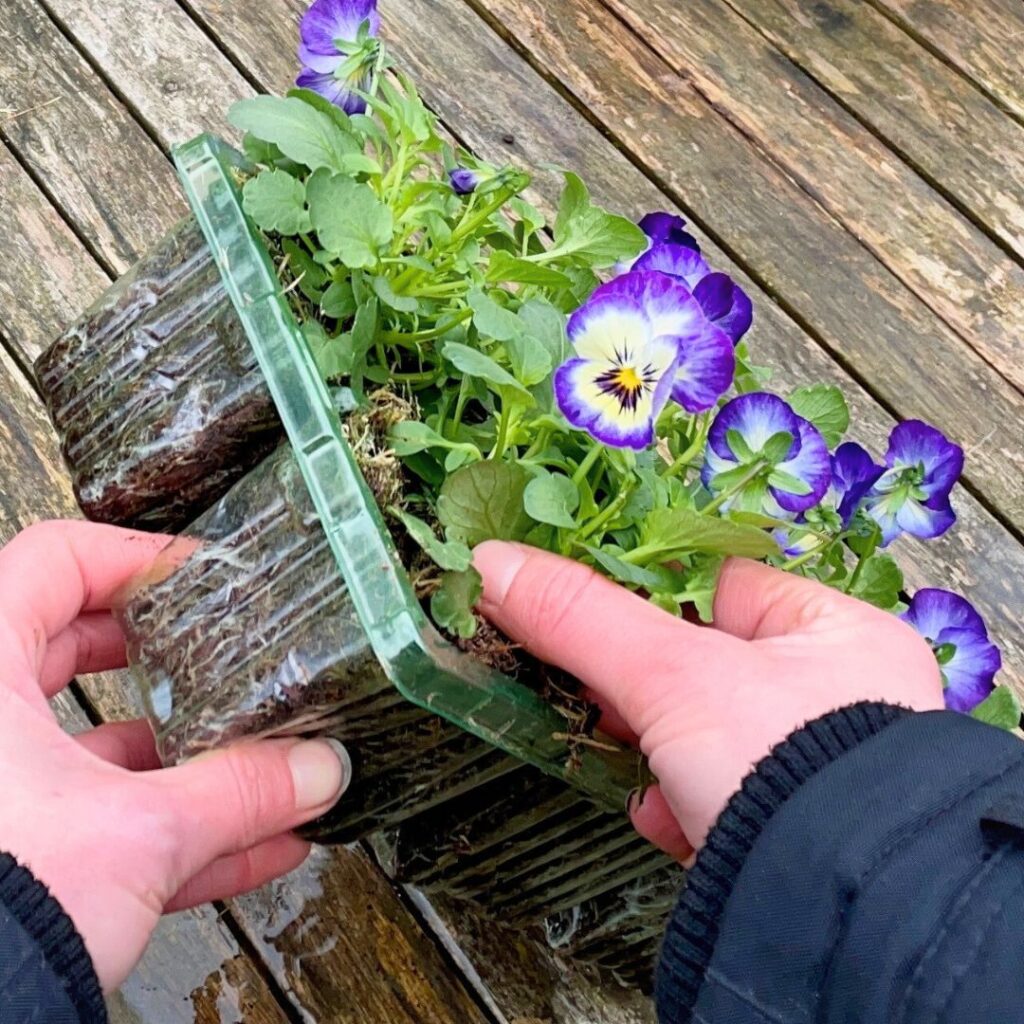
- If the plug has started to get root bound, gently tease out and release some of the roots before planting.
- Plant them to the same depth in their new location. These violas are sharing their container with a salvia that’s just coming out of dormancy. Hopefully the salvia will start to flower around the same time the violas start to fade!
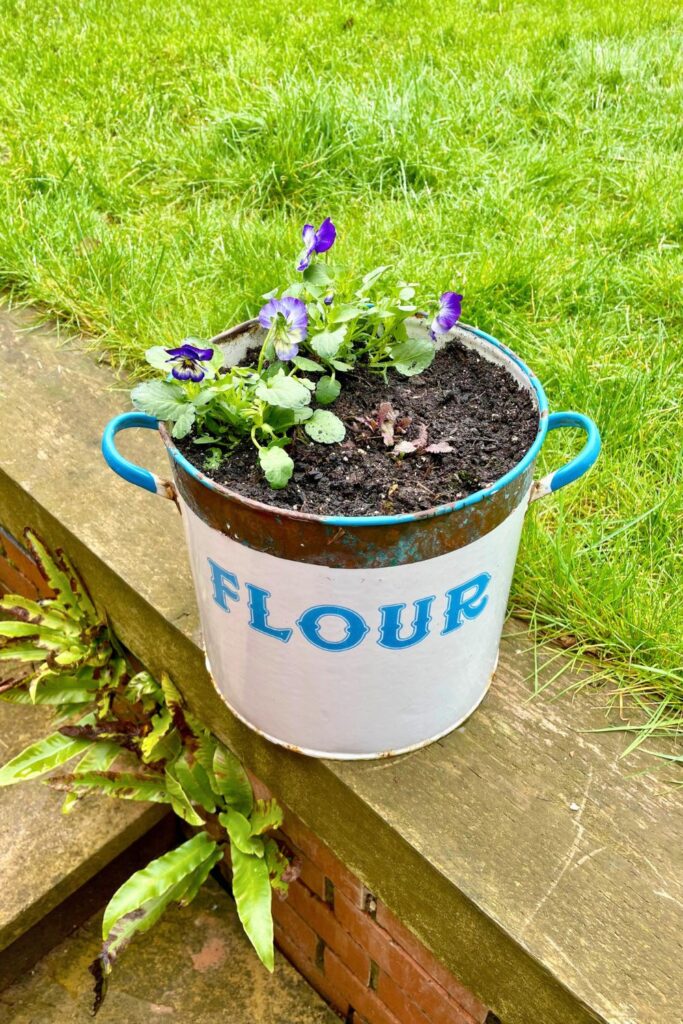
- Mark the location of small plugs in lawns or borders with plant markers.
- Finally, take the cell tray back to the garden center for recycling, or wash it in hot soap water and use it to sow seeds in!
Plug plants – summary
Growing plants from plugs is easy and economical. Annual bedding plants, herbs, vegetables, grasses, native wildflowers and succulents are all widely sold as plug plants. They don’t have to replace growing from seeds or cuttings altogether – I do all three. So if you’ve overlooked plug plants until now, I encourage you to give it a go. It’s one of the quickest and easiest ways to get your gardening fix!

